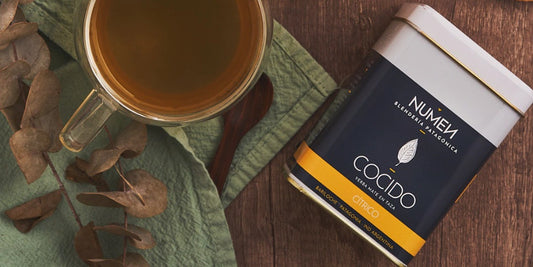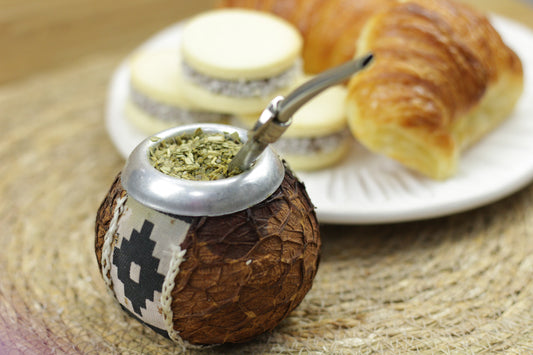Few desserts capture the heart and soul of a nation quite like dulce de leche does in Argentina. This caramel-like spread has become a symbol of Argentine culture, featuring prominently in everything from alfajores to ice cream. But while its flavor is undeniably addictive, the story of dulce de leche is just as rich, steeped in history, controversy, and tradition. Let’s take a journey through time to discover how this iconic treat became a national treasure.
The Origins of Dulce de Leche: Myths and Legends
Like many iconic foods, the exact origin of dulce de leche is subject to debate, with several nations claiming to be its birthplace. However, Argentina fiercely holds onto its claim to fame with a popular legend about the creation of the sweet spread.
According to this story, dulce de leche was discovered by accident in 1829. The tale involves two key figures in Argentina’s history: General Juan Manuel de Rosas, a prominent politician and military leader, and his political rival, Juan Lavalle. During a meeting at General Rosas’ estate, a servant was said to have left a pot of milk and sugar cooking over a fire for too long. When she returned, instead of finding burnt remains, she discovered the mixture had transformed into a thick, creamy, caramel-like substance—dulce de leche was born!
While this anecdote is beloved in Argentine folklore, it’s worth noting that versions of dulce de leche (or similar milk-based sweets) have existed across Latin America and even in Europe long before this. Many point to colonial times when Spanish settlers and their culinary traditions spread across the Americas. Some historical records suggest that recipes for milk-based preserves, known in Spain as "leche quemada" or "burnt milk," were brought over by early colonizers. These recipes likely evolved in different parts of Latin America, giving rise to regional variations, with Argentina perfecting its own version.
The Rise of Dulce de Leche in Argentina
By the 19th century, dulce de leche had become a staple in Argentine kitchens. It was easy to make, requiring only milk, sugar, and patience as the mixture slowly thickened over low heat. Its versatility also made it a favorite—used as a spread on bread, a filling for pastries, and even eaten straight from the jar (a tradition that continues to this day!).
As the product grew in popularity, Argentine families began to pass down recipes, and soon local bakeries were incorporating it into their offerings. But it wasn’t until the late 19th and early 20th centuries that dulce de leche really took off, thanks in part to technological advancements. With the rise of industrialization, factories were able to produce large quantities of dulce de leche, ensuring its place in mass consumer culture.
Dulce de Leche Goes Global
Argentina’s immigrant population also played a role in spreading the love of dulce de leche beyond its borders. Italian and Spanish immigrants, in particular, brought with them a love of sweets and pastries, which blended seamlessly with Argentine traditions. The classic alfajor, a cookie sandwich filled with dulce de leche, became a symbol of Argentine identity, while also gaining popularity in neighboring countries like Uruguay and Chile.
By the mid-20th century, dulce de leche had cemented itself as a quintessential part of Argentina’s culinary heritage. The nation’s largest dairy producers began exporting it to other parts of the world, and soon international foodies were discovering the allure of this caramel spread.
In 2003, dulce de leche achieved global recognition when the United Nations Educational, Scientific and Cultural Organization (UNESCO) declared it part of Argentina’s "intangible cultural heritage." This was not only a nod to its culinary importance but also to the deep emotional connection Argentinians have with this treat.
The Battle for Dulce de Leche: Argentina vs. Uruguay
As with many iconic foods, there’s always some rivalry, and in the case of dulce de leche, the most heated debate exists between Argentina and Uruguay. Uruguayans are equally passionate about their version of dulce de leche, with some claiming that they, not Argentina, were the first to invent it.
This culinary battle came to a head in 2003 when Argentina sought to have dulce de leche recognized by the World Trade Organization (WTO) as an Argentine product, much like champagne is recognized as coming from the Champagne region of France. However, Uruguay and other neighboring countries contested this, arguing that dulce de leche is a shared cultural product of the Río de la Plata region. In the end, no one country was granted exclusive rights, but the debate continues in the hearts and minds of dulce de leche enthusiasts.
Modern-Day Dulce de Leche: A Taste of Tradition
Today, dulce de leche remains a cornerstone of Argentine cuisine, found in homes, cafés, and gourmet restaurants alike. It’s still enjoyed in its most traditional forms, whether spread on toast for breakfast or used as a filling for facturas(pastries) and tortas (cakes). But Argentine chefs and bakers have also taken dulce de leche to new heights, incorporating it into avant-garde desserts and experimenting with new flavor combinations.
Dulce de leche has also found a place in the global gourmet market, with jars of the Argentine delicacy gracing the shelves of high-end stores from New York to Tokyo. International chefs often incorporate it into their own creations, giving the world a taste of Argentina’s sweet culinary heritage.
A Sweet Legacy
From its humble origins as a kitchen mishap to its status as a globally recognized delicacy, dulce de leche has traveled a long, sweet road. For Argentinians, it’s more than just a dessert—it’s a cultural touchstone, a connection to their history, and a source of national pride.
As it continues to spread across the world, dulce de leche serves as a reminder of the beauty of simple ingredients transformed into something extraordinary. Whether enjoyed straight from the jar, layered in a decadent dessert, or paired with coffee on a leisurely afternoon, there’s no denying that this sweet, creamy treat holds a special place in the hearts of many—especially in Argentina, where its legacy continues to grow.
So, the next time you indulge in a spoonful of dulce de leche, remember that you’re tasting centuries of tradition, passion, and sweetness from the heart of Argentina.



